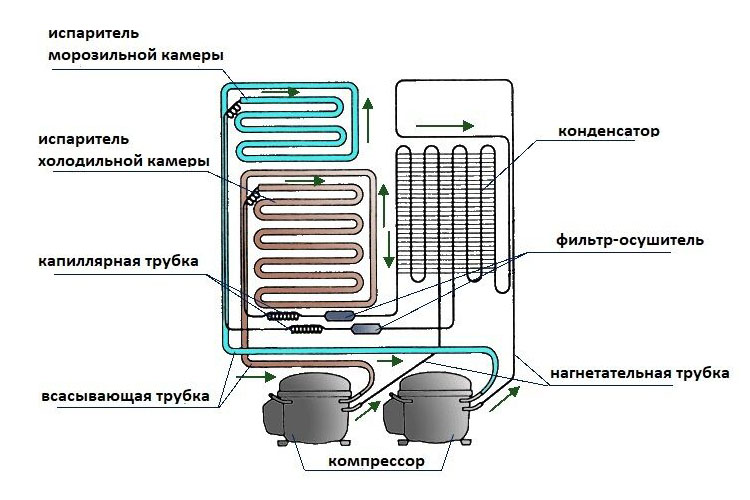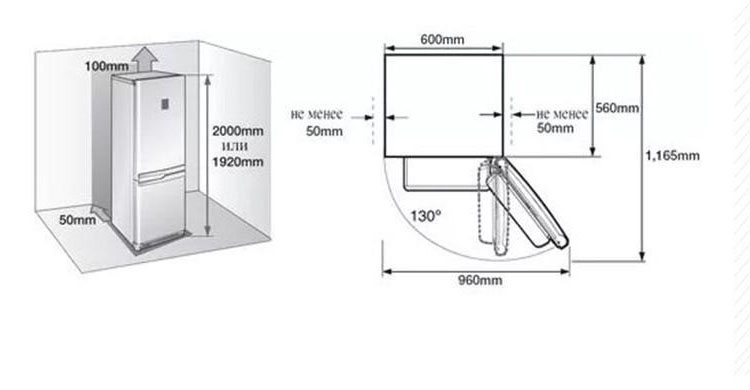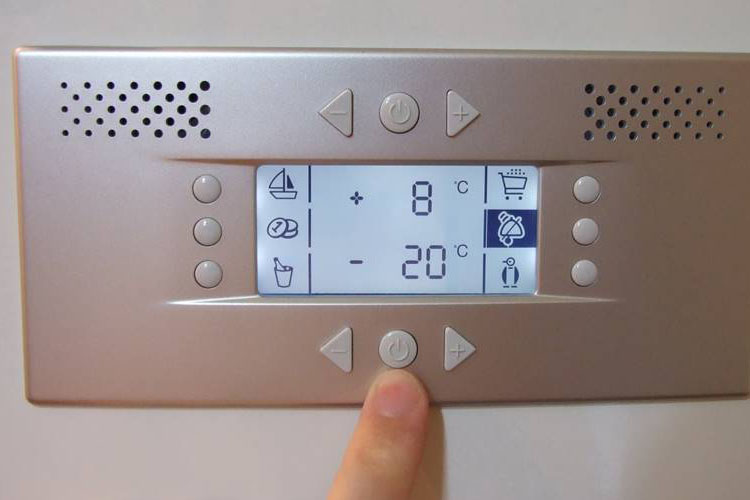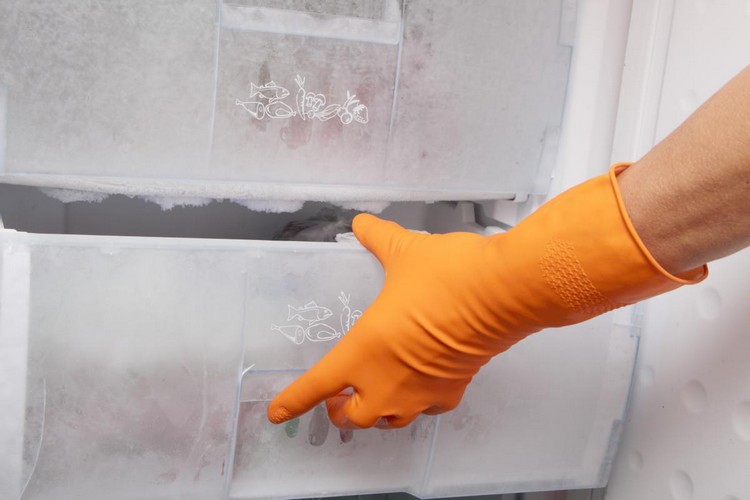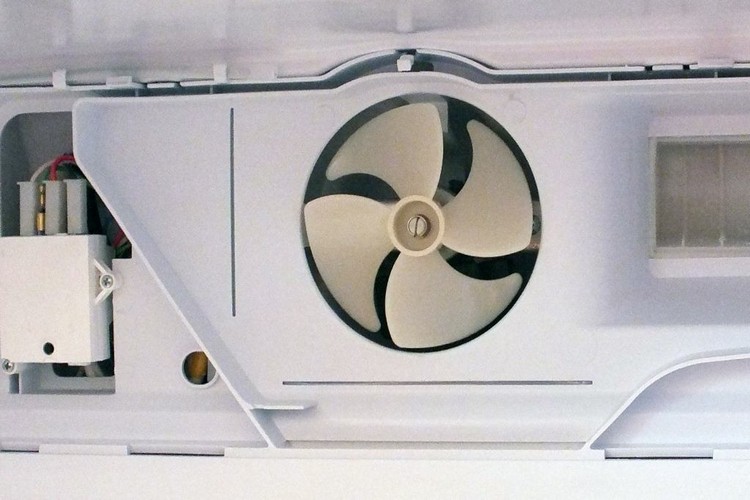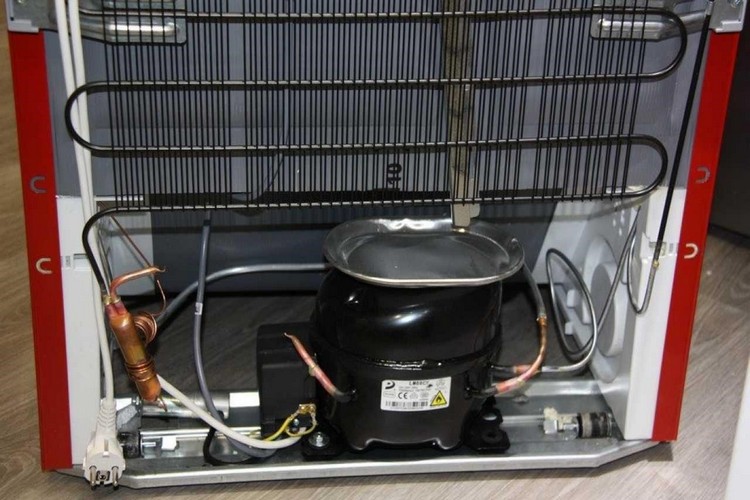Why the refrigerator doesn't work, but the freezer works: the reasons and ways of elimination of malfunction
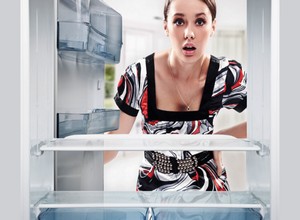 The situation when the refrigerator suddenly stops giving cold, although the freezer works properly, is very common. And this does not necessarily mean a low quality of the refrigerator or a factory defect.
The situation when the refrigerator suddenly stops giving cold, although the freezer works properly, is very common. And this does not necessarily mean a low quality of the refrigerator or a factory defect.
In fact, the problem often appears as a result of improper operation, and in some cases you can fix it yourself.
In this text, we will look at the main causes of refrigerator malfunction.
Contents
Refrigerator structure
Cooling in a refrigerator is performed through the use of a compressor.
In essence, the operation of a refrigerator is based on the conversion of the refrigerant circulating in it from a liquid state to a gaseous state. This procedure is called condensation and it is this process that gives the desired cooling effect.
Refrigerant is nothing more than a liquid that evaporates at a low temperature. It absorbs heat inside the chamber and then passes through the condenser, that is, through the very curved tube usually located in the back of the refrigerator.
The compressor is responsible for this whole process. If the compressor breaks, the temperature in the refrigerator will rise dramatically, negatively affecting the food stored in it.
Thus, the compressor is the "heart" of the entire refrigerator, because it is its work that allows the refrigerant to circulate freely throughout the refrigerator.
The refrigerant flows from the compressor to the condenser, which is located in the back of the refrigerator, in the form of a coil. Through this device, the refrigerant is condensed under high pressure and becomes a liquid again.
In the evaporator, the refrigerant absorbs heat inside the refrigerator. It is then converted into expanded gas, which enters the compressor again, and then the whole process repeats.
The thermostat or thermostat is another important component of the refrigerator that is responsible for supplying voltage to the compressor and fan motors at the temperature set on the mode switch in a timely manner.
If the thermostat is not working properly, it can disrupt the cooling system and consequently, the refrigerator will simply not cool.
How the refrigerator should be installed
First of all, no refrigerator should be against a wall. You should always leave about 2 centimeters of free space between the device and the wall.
This will ensure the necessary ventilation of the elements, which are heated during the operation of the refrigerator.
In addition, at the stage of planning the installation of the refrigerator, it is necessary to ensure direct access of the device to the socket outlet. Then there will be no need to use extension cords and hide them behind furniture.
If the floor in your kitchen is not level everywhere, install the refrigerator in the flattest area because the refrigerator must be level.
It is very important that the unit not be located in close proximity to an oven, a freestanding stove, or a fireplace. Also avoid placing your refrigerator near a radiator or heater.
These appliances can negatively affect your refrigerator because it will have to work harder, resulting in higher operating costs and increased energy demand.
Simple reasons
Let's take a look at the simplest and most non-invasive reasons why the refrigerator compartment may not work.
Incorrect temperature
A common cause of refrigerator malfunction is incorrect temperature setting.
Check the temperature set in the refrigerator: if it is not equal to 5 ° C, then change the parameters to the optimum.
And also keep in mind that frequent and unreasonable opening of refrigerator door does not contribute to its proper operation. Warm air gets inside, and if there is too much air in your refrigerator, it will be difficult for it to cope with all this load.
Improperly positioned refrigerator
Some hardware failures can be directly related to the fact that the user installed the refrigerator incorrectly.
Quickly assembling the unit without carefully reading the manual is not a good idea, as this often leads to breakdowns.
A very common mistake is to place the refrigerator next to a wall (if it is not specially adapted to it), thus significantly reducing the air access to the unit. This leads to incorrect operation of all equipment, including problems with optimal cooling.
It is necessary to check in the refrigerator's operating instructions for the space available in the back and on the sides. If these conditions are not currently met, provide the unit with the necessary distance from the wall.
Placing hot foods in the refrigerator
Many people place pots of hot food in the refrigerator, without thinking at all about what consequences this may have for the equipment.
Hot food heats up the air in the compartment, which means the compressor needs to do an increased amount of work to ensure optimal conditions for the food being stored.
If the air inside the upper chamber is too warm, you will naturally get the impression that the refrigerator is not freezing well, although in fact there is cooling, it is just almost imperceptible.
The refrigerator has not defrosted for a long time
In older models of refrigerators (for example, Atlant XM-4010-500), regular defrosting is an obligatory condition for their proper functioning. Failure to observe this condition leads to a decrease in the performance of the device.
In many models only the freezer is equipped with the No Frost function, while the refrigerator still requires manual defrosting. Even if only once a year.
In this case it is quite common for the freezer to work normally even after years of use, while the refrigerator has problems with performance or even does not work at all.
To prevent this from happening, read the manufacturer's instructions for equipping your refrigerator with the No Frost system. If your model only uses a partial version of this feature, remember to defrost regularly.
Improperly sealed refrigerator door seal
Even the smallest gap in the door can allow warm air to get inside your refrigerator.
The unit's cooling quickly loses efficiency due to the lack of proper conditions. This situation is often caused by damage or factory defect of the rubber seal, because of which, when opening the door, the rubber part slightly changes its position or even opens, leaving gaps, which are quite enough for the warm air to get inside the refrigerator.
To make sure that everything is working properly, do a simple test: put your hand to the closed door and slowly slide it down. If you feel even minimal. coolness, then the cause of the failure is a leaky gasket.
The solution to this problem depends on how damaged the gasket is and whether it needs to be replaced. In some cases, simply put the gasket back in place and press it firmly against the wall of the door. Then the door will close normally.
But in most cases, still require the participation of professionals.
Difficult breakdowns
If the cause of the breakdown relates to the failure of complex components of your appliances, you cannot do without professional help, under warranty or from independent specialists.
Faulty fan motor
It is because the fan motor is working properly that the cooling and distribution of cold air in the refrigerator and freezer compartments takes place in equal measure. That said, some refrigerators have more than one fan motor (such as a condenser fan motor).
If the condenser fan motor is not running, the cold air will simply not circulate through the refrigerator compartment.
In this case, it is possible that the freezer compartment cools steadily, but the refrigerator compartment does not.
To determine if the fan motor is functioning properly, simply check the fan blade with a wand or your finger. If the propeller does not turn freely, the fan motor must be replaced.
The same applies if the motor is unusually loud. If the engine does not start at all, check the continuity of the windings with a multimeter and, if necessary, again, replace the components.
Faulty starter
Sometimes the refrigerator compressor does not start not because of its own malfunction, but because the starting relay is broken.
It may happen that the starter simply does not give the appropriate signal to the components of the equipment, and as a result, the cooling process simply does not begin.
In such a situation, it may be necessary to replace the starter - a rather complicated procedure, which should be entrusted to professionals.
Compressor overheating
As you already know, the compressor is the type of motor that compresses the refrigerant and distributes it through the evaporator and condenser. This keeps the inside of the refrigerator cool at all.
Of course, if such an important component overheats, its functionality can be questioned.
Most often, compressor overheating is caused by insufficient lubrication, although it can also be a misadjusted thermostat that leads to overloading and overheating.
Improper heat dissipation by the refrigerator can also be caused by a buildup of debris, dirt, and dust on the condenser coils. In that case, manual cleaning is sufficient.
But if the cause of overheating is a more complex malfunction, a replacement may be necessary.
Faulty temperature sensor or thermostat
The temperature sensor monitors the temperature in the refrigerator and transmits the data to the control module. Based on these, the control module regulates the power to the compressor and fan.
If the sensor is broken, the compressor and evaporator fan may not start when needed. As a result, the refrigerator temperature will not be low enough.
To determine if the temperature sensor is defective, turn the thermostat knob from minimum to maximum until you hear a distinctive click.
If you hear a click, the thermostat is probably working. If it does not click, use a tester or special measuring equipment (multimeter) to check the integrity of the component.
The resistance of the sensor should change depending on the temperature in the refrigerator. If the sensor resistance does not change, then it must be replaced with a new one.
The control board is defective
If the condenser is the "heart" of the refrigerator, the control module is the "brain". This unit is responsible for all refrigerator functions, including defrosting, rapid cooling, and activating the thermostat when the temperature drops below or above the set level.
If the control board is faulty, these functions simply won't work.
The cause of the malfunction can vary - sometimes it's a factory defect, and sometimes it's diodes blown as a result of a power surge.
However, this does not happen very often. It is much more likely that the cause is something else, so check the other components before replacing the board. If you have already ruled out other possible causes, have the board replaced by an expert.
Clogged or oxidized tubes
The condenser is usually located on the back of the refrigerator, although sometimes it is on the bottom of the appliance. When refrigerant flows through the condenser, it dissipates heat, allowing the interior of the refrigerator to cool.
If the condenser is dirty, it will not be able to dissipate the heat efficiently. Thus, dirt accumulated on this element greatly reduces the efficiency of the refrigerator. It has to work harder to perform its normal functions and maintain the proper temperature.
Therefore, do not forget to clean the condenser if its tubes are dirty or subject to oxidation.
Useful video
What to do if your refrigerator doesn't work when the freezer is working properly, you'll learn in the video:



